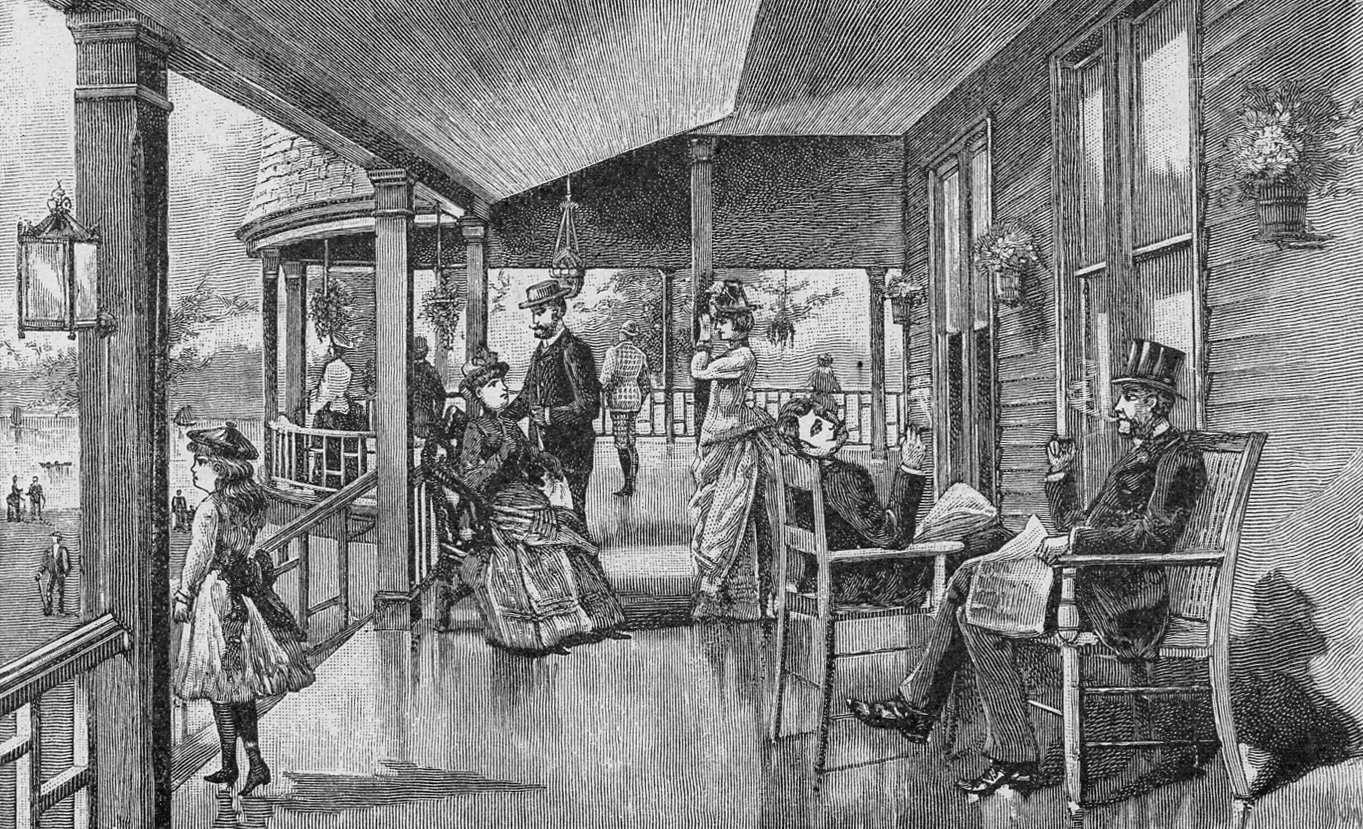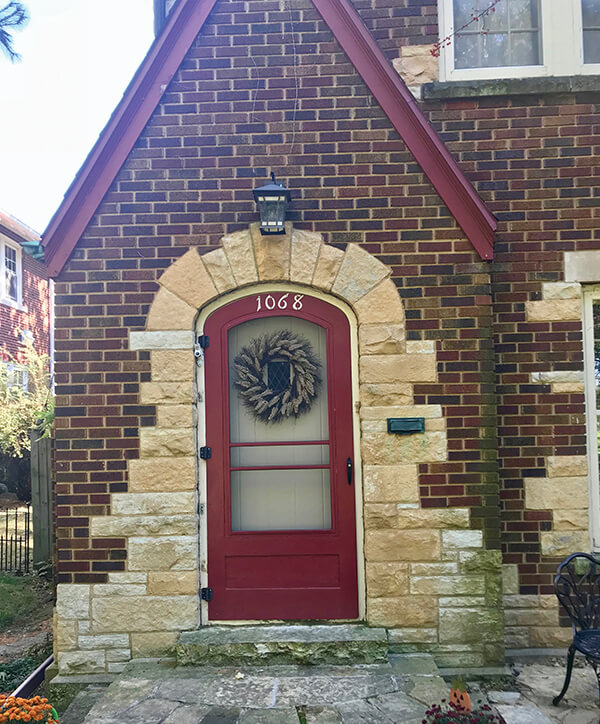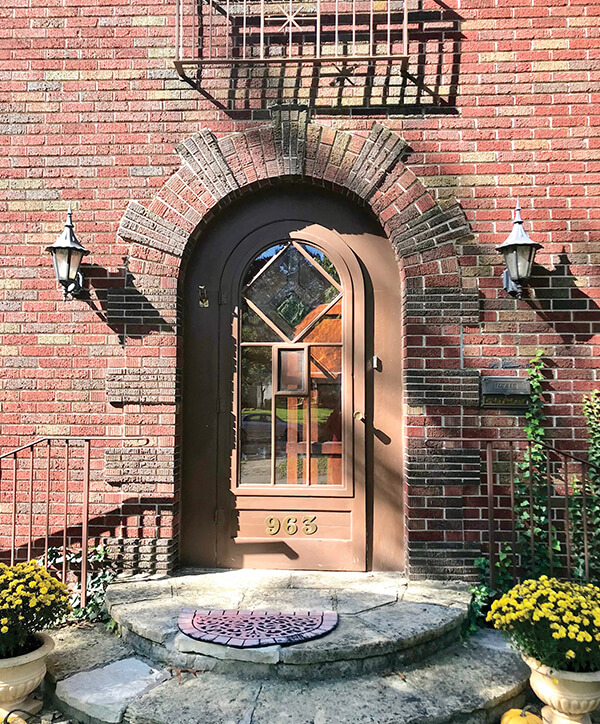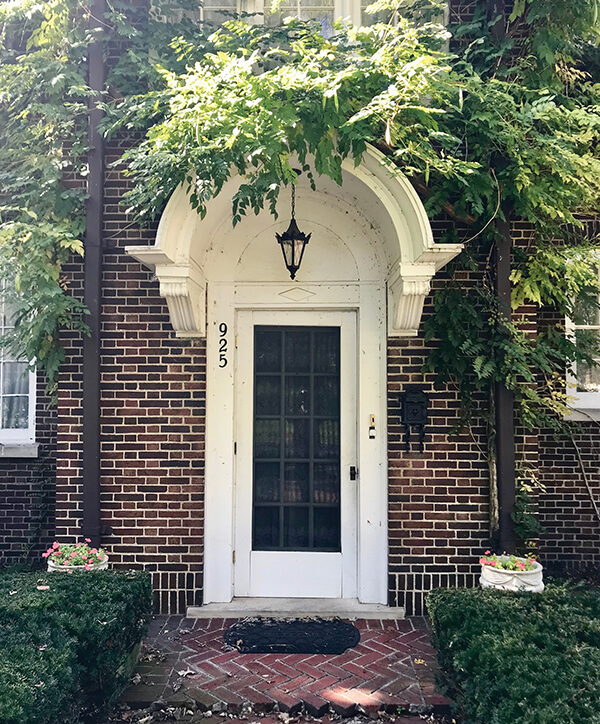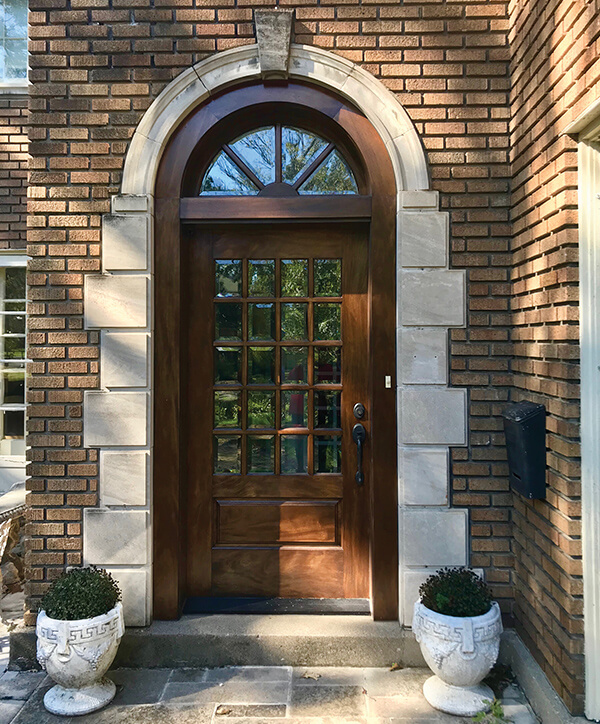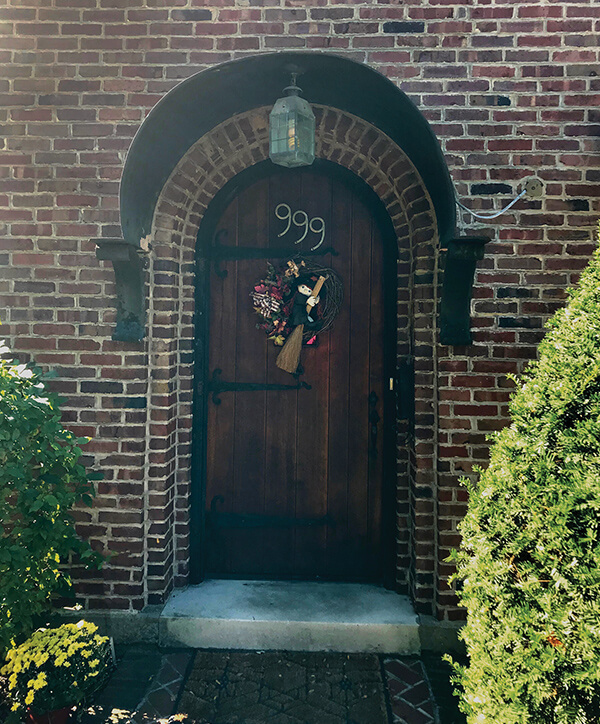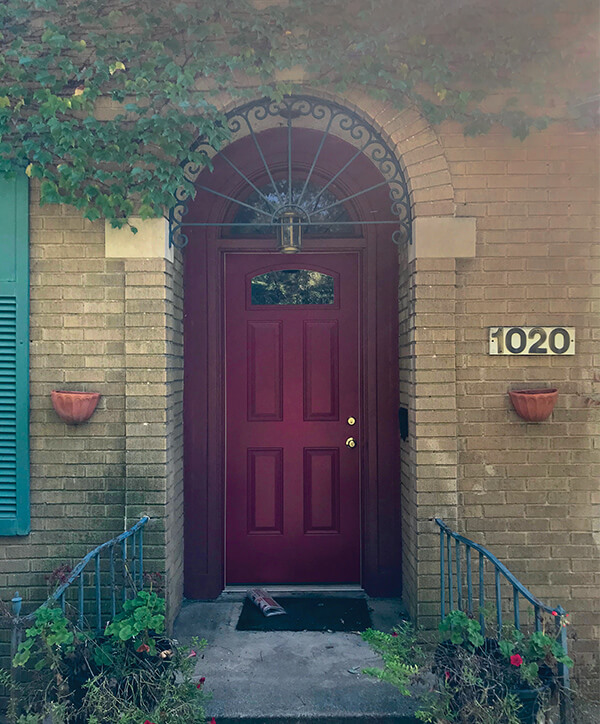Riverview Historic District Neighborhood Self Guided Walking Tour
Welcome to the Riverview Historic District!
No two houses are alike, and hidden gems are everywhere if one just takes a moment to look. Download our Walking Tour Brochure or follow the digital version and see for yourself!
Begin Your Tour At
B. Harley Bradley House
701 S. Harrison Street
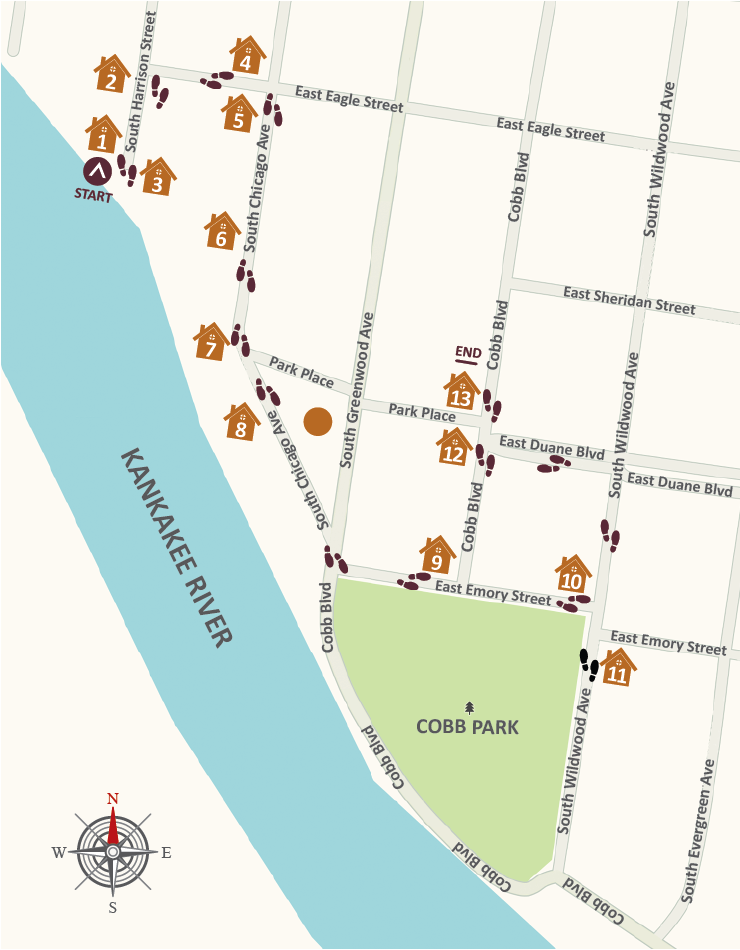
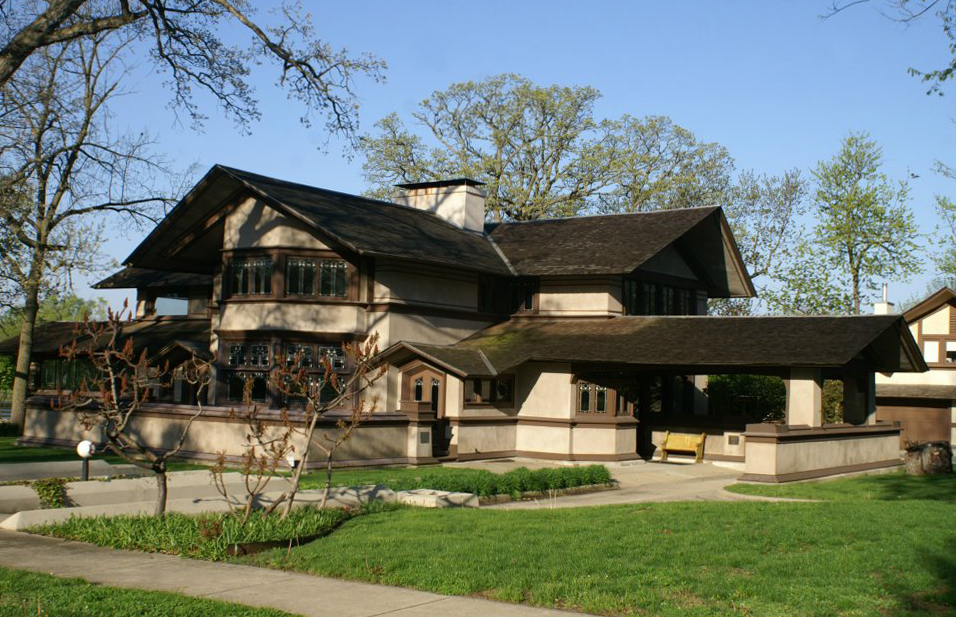

- B. Harley Bradley House
- 701 South Harrison Ave
- Built in 1901
- Frank Lloyd Wright, architect
Considered Wright’s first Prairie School of Architecture structure, the Bradley House, at the time, was an example of total integration of interior furnishing, leaded art glass, and architectural style. Low-pitched roof, widely overhanging eaves, and swept-back gable peaks are characteristics of this style. The leaded glass is a tulip pattern; David Hanks described it as “the most complex and virtuoso of Wright’s early windows.”
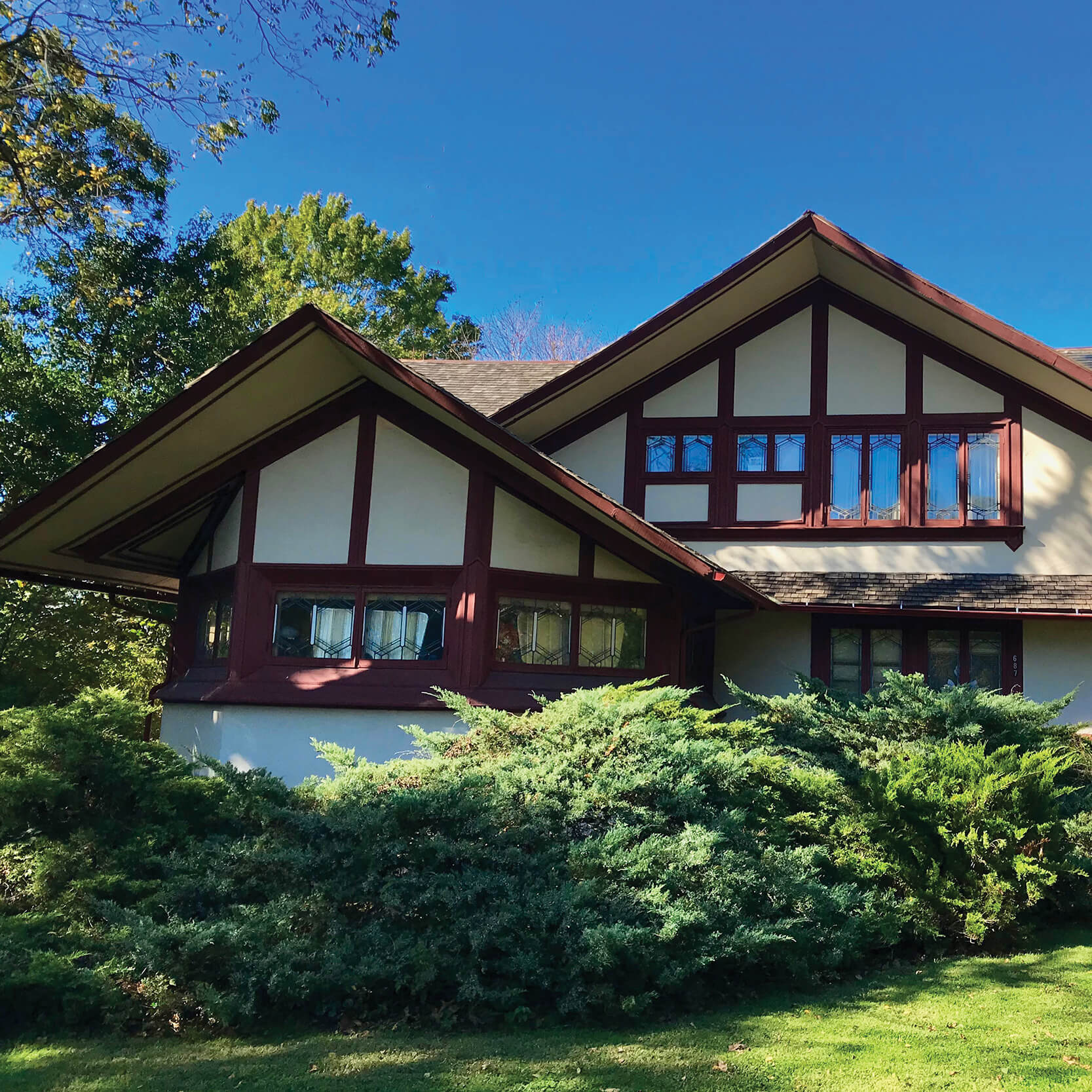

- Warren R. Hickox House
- 687 South Harrison Ave
- Built in 1900
- Frank Lloyd Wright, architect
Wright lived in the basement of the Hickox home while he designed the Bradley house next door. Mr. Hickox wrote that originally his house was to be on the river, “but because of the size of my sister’s home, we decided it would be better for me to build at the end of Eagle” next to the Bradley House. He and his sister visited Wright in 1900 in Oak Park to discuss building each a home. This house is listed on the National Register and Illinois Historic Landmarks Survey for Kankakee County.
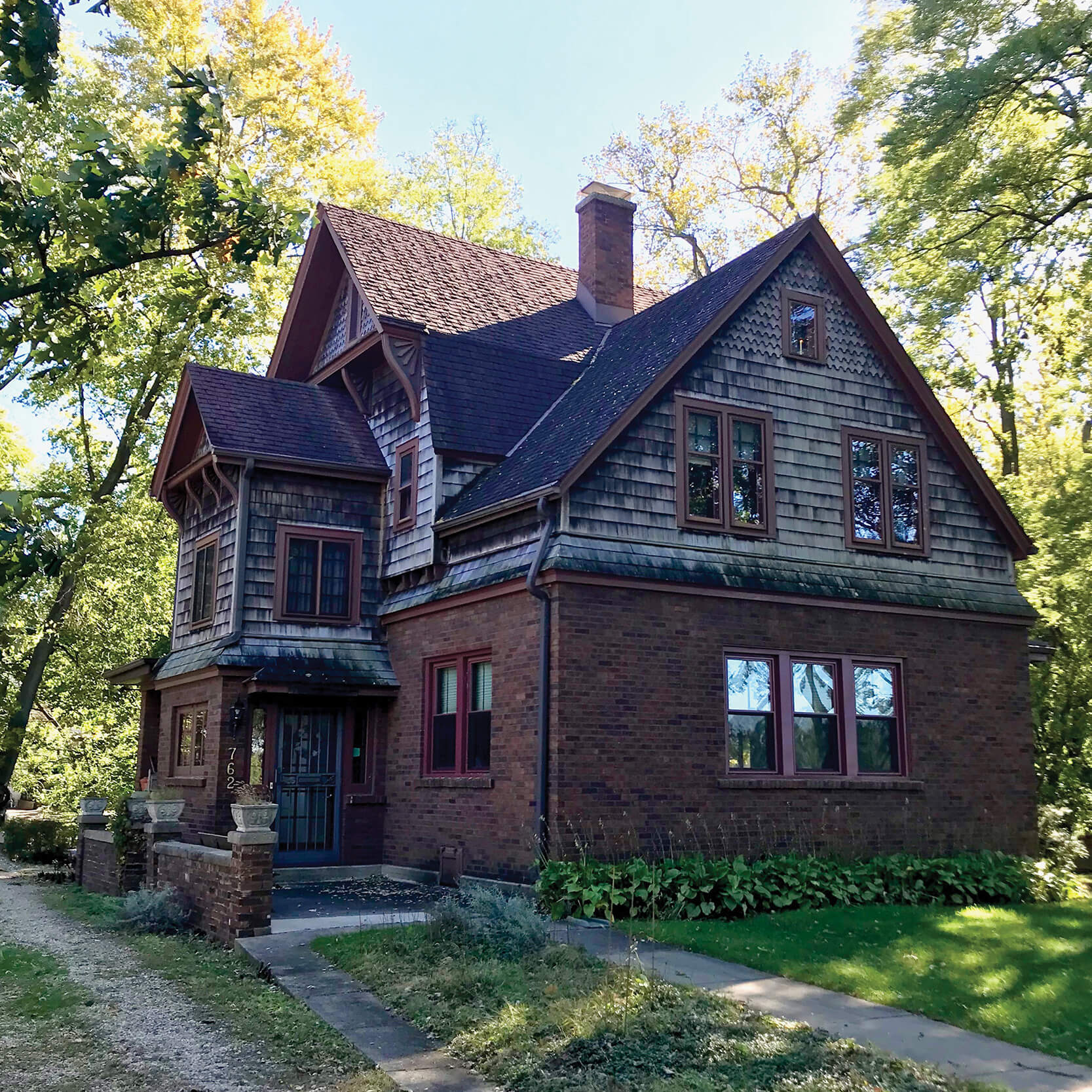

- William Volkman House
- 762 South Harrison Ave
- Built pre-1900, adapted 1919
- architect unknown
Originally the carriage house on Col. Haswell Clarke’s property, Mr. Volkman, a local jeweler, turned the structure 90 degrees and remodeled it as a home for his bride, Cecelia “Bim” Eden. The original Clarke house was divided and moved one block north to 646-650 and 668 South Harrison; close inspection of these two structures yields a resemblance to the Volkman Shingle design. This property was once known as Princess Point because an Indian princess camped here.
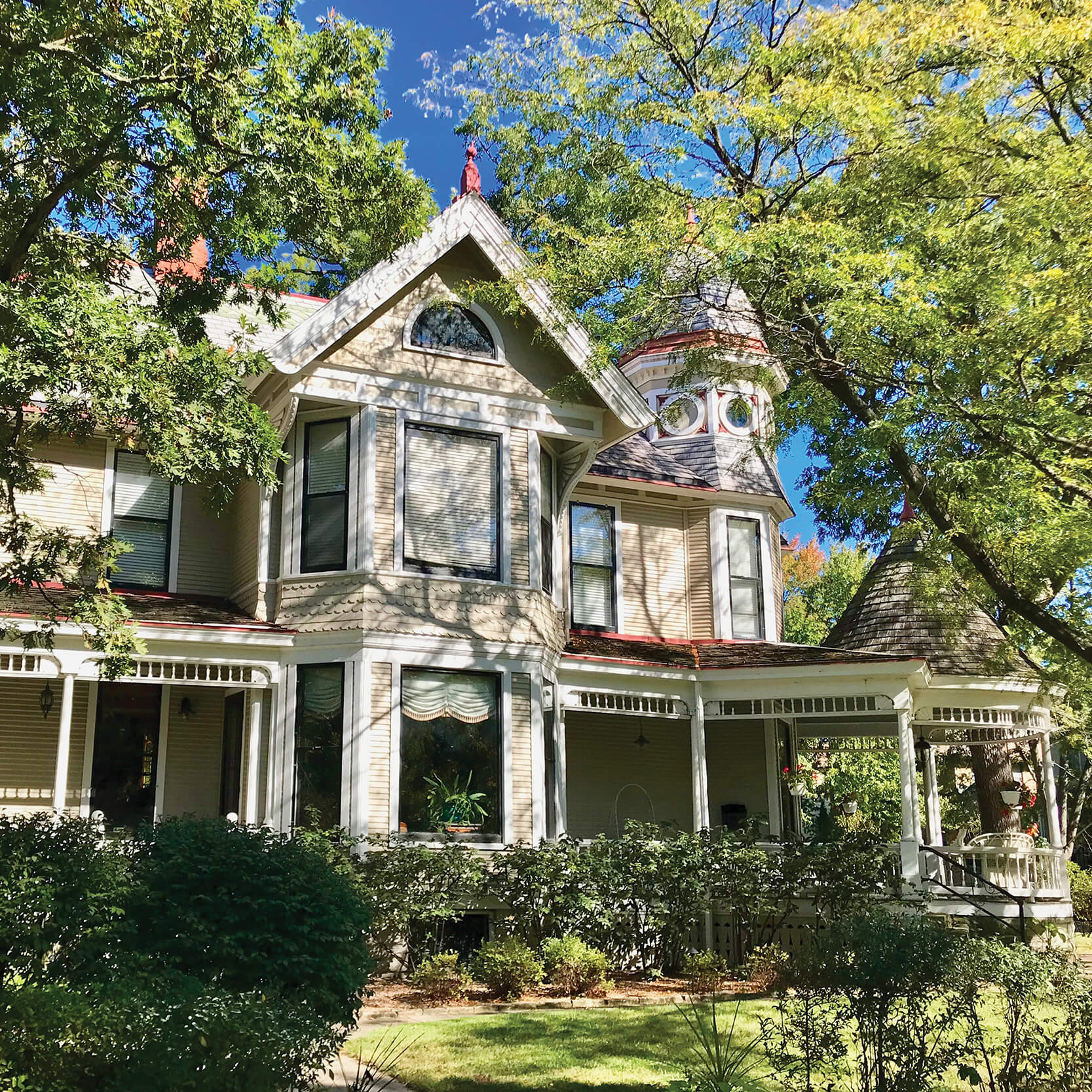

- Magruder-DeSelm House
- 691 South Chicago Ave
- Built in 1867
- I.C. Wyckoff, architect
Saved from decay by Jean Alice Small and Don des Lauriers in the 1980s, this Queen Anne structure includes typical features, like bay windows, roof lines with different levels, and a lot of trim and decorations on all surfaces. A large beveled, arched window in the entrance hall is a dominant feature of the front façade. Henry Magruder was mayor from 1897 to 1899. Arthur Deselm, the next owner, was an attorney and judge.
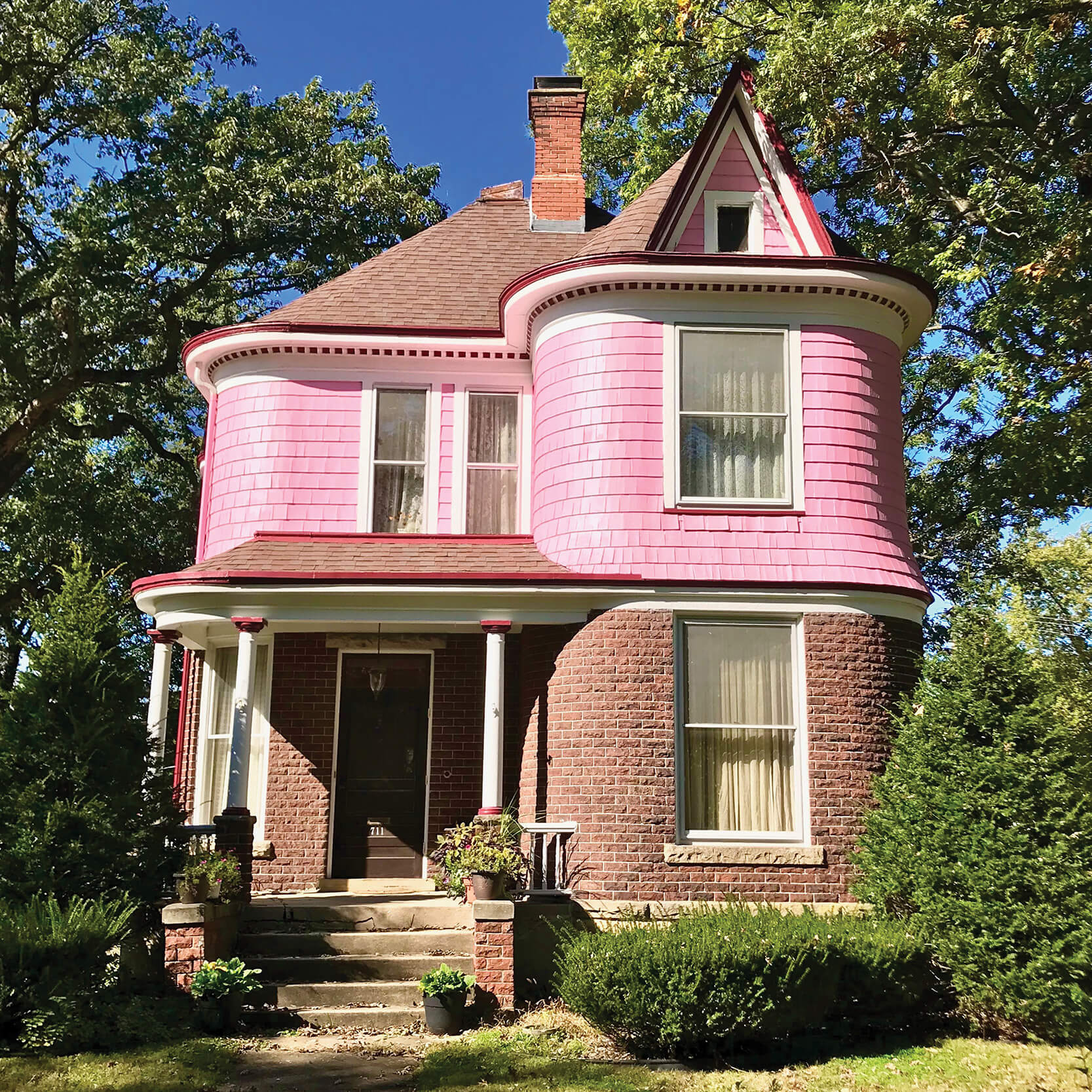

- Woodruff-Radeke House
- 701 (711) South Chicago Ave
- Built in 1896
- James Deebauk, builder
An unusual feature of this Shingle-style home, every room has rounded corners, which reflect the smooth surface. The first floor is a rusticated dark-red brick while the second level uses a shingle material that flares at the base. Rumors the bricks used for the structure were intended for the city streets spread when its builder, W. K. Woodruff, the city engineer, left the area unexpectedly in 1900. William Radeke, the next owner, was president of the F. D. Radeke Brewing Company.


- Hunter-Hattenberg House
- 825 South Chicago Ave
- Built in 1898
- architect unknown
Riverview’s “painted lady,” this Queen Anne style has classical details, like a massive, steep roof extending down to meet the porch roof. A two-story polygonal tower is located at the front corner, and patterned shingles separate the first and second floors. Many leaded and stained-glass windows accent the house. William Hunter was a pioneer stenographer, attorney, and judge. Albert Hattenberg, pharmacist and Kankakee mayor from 1937-53, purchased the home in 1942.
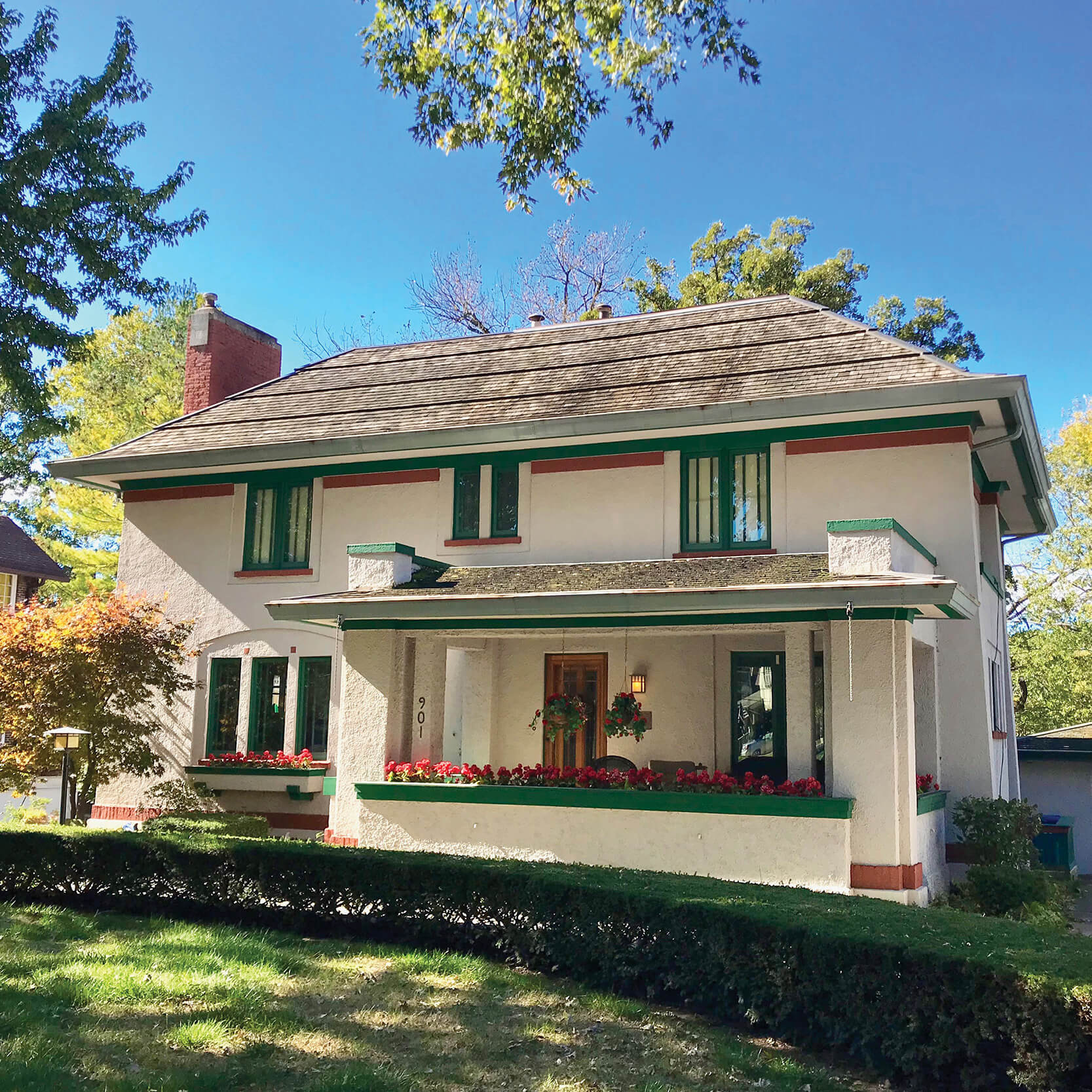

- Swannel House
- 901 South Chicago Ave
- Built in 1911
- Tallmadge and Watson, architects
Designed by students of Frank Lloyd Wright, the Prairie style features unique low-pitched hip roof flaring at the eave line and leaded glass windows above the sideboard and fireplace mantel. An all-electric home, prisms, crystal balls, and beaded light bulb covers provided an ever-changing splash of color. The property was designed with provisions for an automobile, not livery accommodations. It was listed on the National Register of Historic Places in 1982.
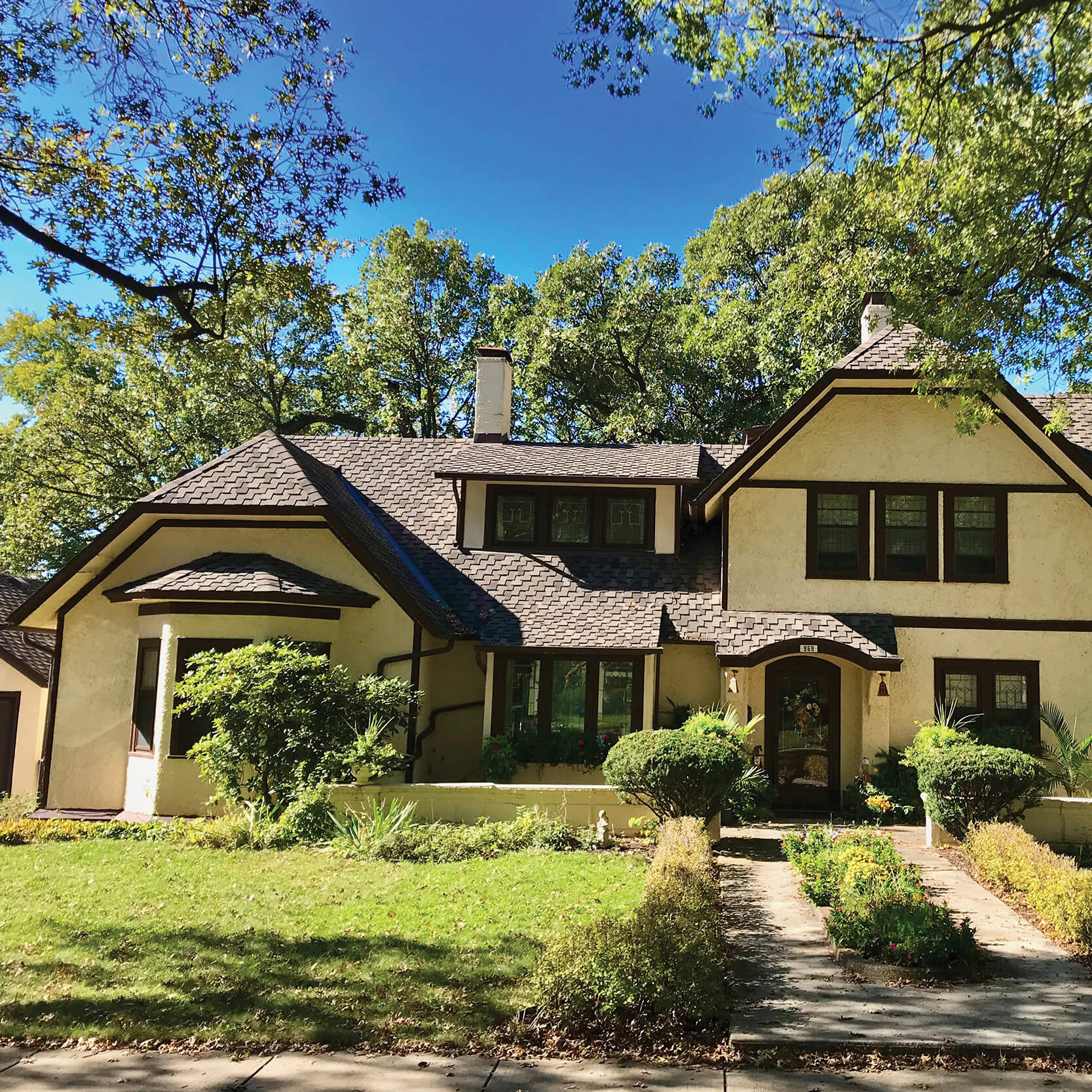

- Charles Cobb House
- 969 South Chicago Ave
- Built in 1911
- Harvey Wright, architect
With a look similar to Anne Hathaway’s cottage in Stratford-on-Avon, the structure blends several styles. The exterior is stucco with contrasting Prairie-influenced banding for horizontal emphasis. All windows in the house and garage are a delicate geometric, leaded glass. Built by Emory Cobb’s eldest son, the home’s owner Charles was superintendent of the Kankakee Water Works, and he managed the Kankakee Electric Railway Company, owned by his father.
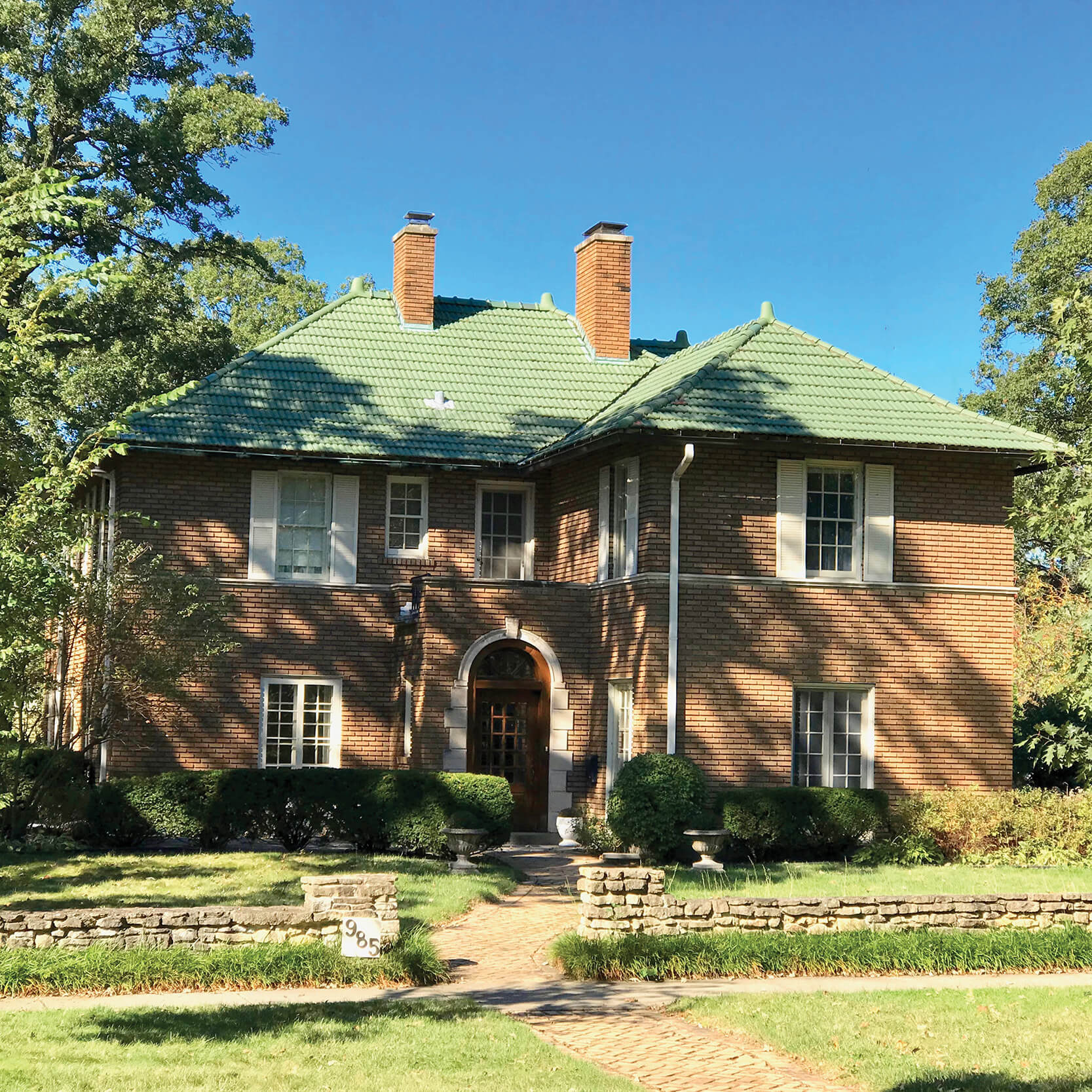

- Taylor-Hamilton House
- 985 Cobb Blvd
- Built in 1925
- Architect unknown
This asymmetrical Italian Renaissance structure, unusual for the neighborhood, has brick veneer with a green-tile hip roof. The house was built for Herbert Taylor, whose father was instrumental in bringing the Illinois Eastern Hospital for the Insane to Kankakee. Now called Shapiro Developmental Center, its clock tower is viewed from Cobb Park. Dr. Edwin Hamilton was the second owner and was Chief of Staff for St. Mary’s Hospital for thirty-five years.
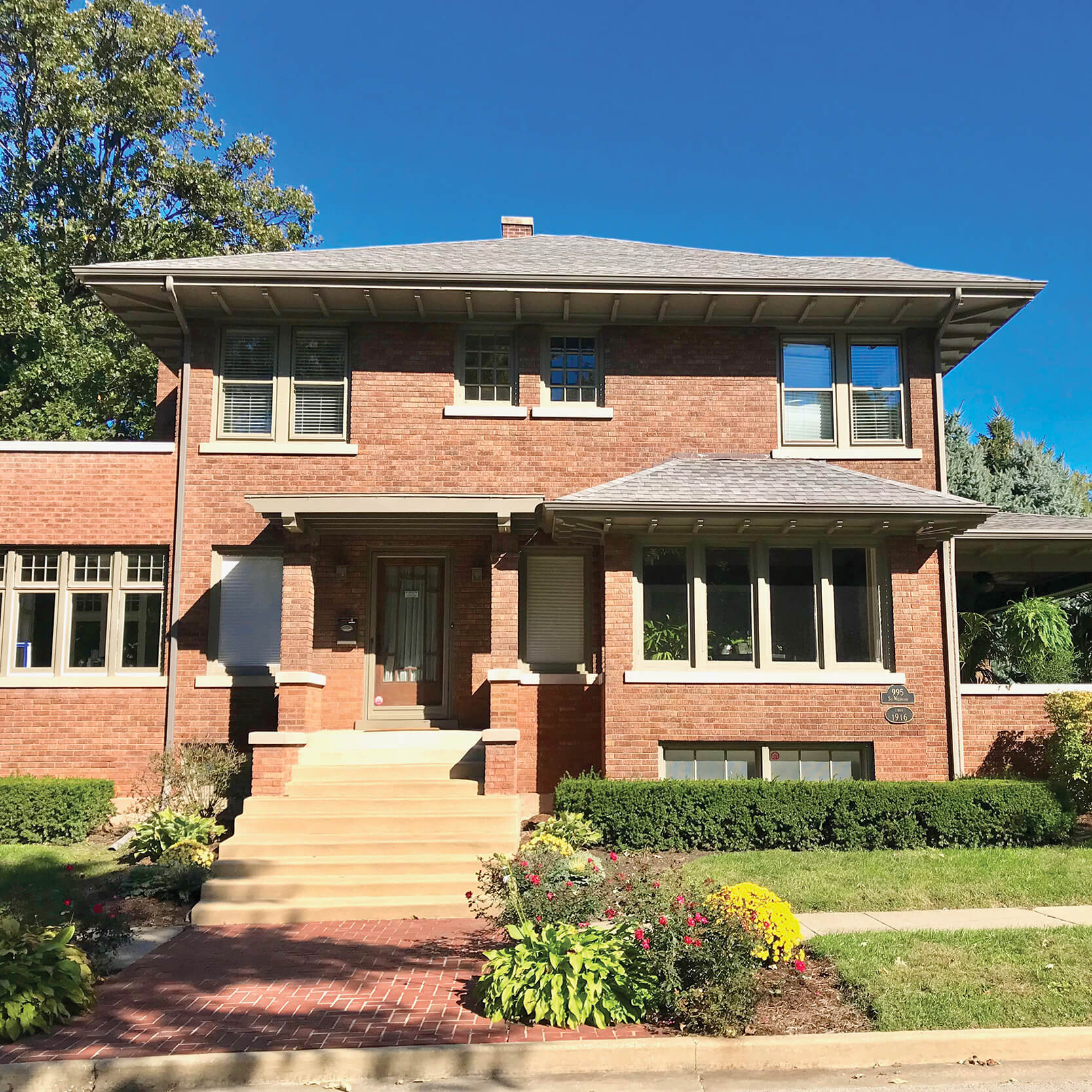

- Beckman-Handorf House
- 995 South Wildwood Ave
- Built in 1916
- William Bass, contractor
Situated across from Cobb Park, this brick Prairie house has a pyramidal roof and gabled dormer, originally covered in fish-scale shingles. The large Wildwood-facing front porch, inviting on a summer day, has French doors to the living room and a rectangular bay in the dining room. The first owner, Carolina (Beckman) Handorf was the daughter of Federick and Margaret Beckman, a pioneer family in the area. She built houses at 990 S. Chicago and 667 S. Harrison.
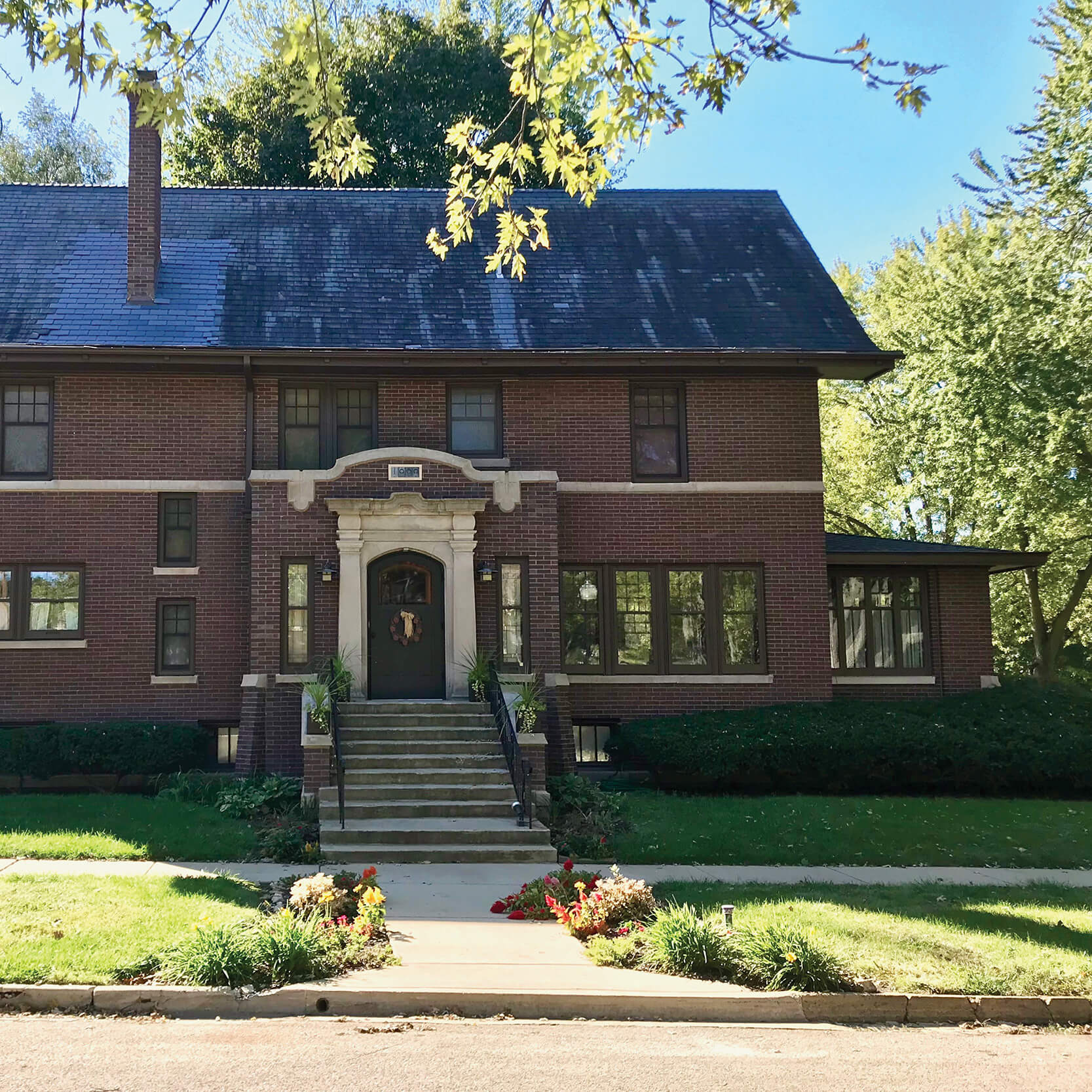

- Buntain House
- 1000 South Wildwood Ave
- Built in 1914
- Perry and Thomas, architects
With a stately, Mission-influenced front entrance, this brick home has Prairie features, stone lintels and railing caps, and a stone coursing between the two levels. The entrance has carved motifs that separate the windows. C.M. Clay Buntain, originally from Momence, received his law degree from Northwestern University. He moved to Kankakee to open a law office in 1904 and served as president of the Illinois State Bar Association from 1924-25.
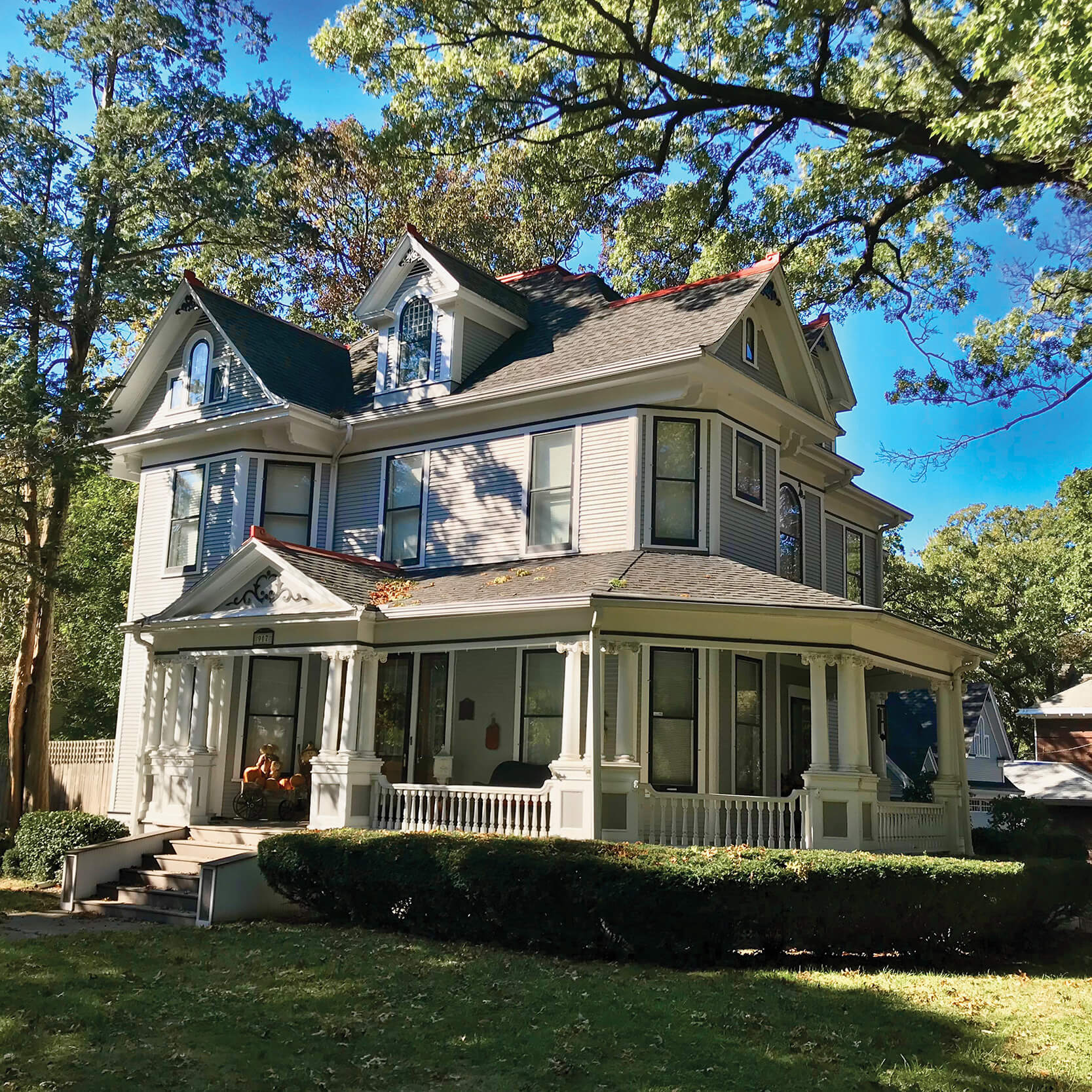

- W.S. Campbell House
- 917 Cobb Blvd
- Built in 1898
- Architect unknown
This Queen Anne style clapboard structure is asymmetrical in composition with two-story bays and a steep hip roof. The dormers are accented with round arched and Palladian-style windows. Groups of Corinthian-capped columns highlight the curved, wrap-around porch. A captain in the Civil War, Winfield Scott Campbell served with Gen. U. S. Grant in the campaigns through Kentucky, Tennessee, and Vicksburg. His son’s home was at 895 Cobb Blvd.
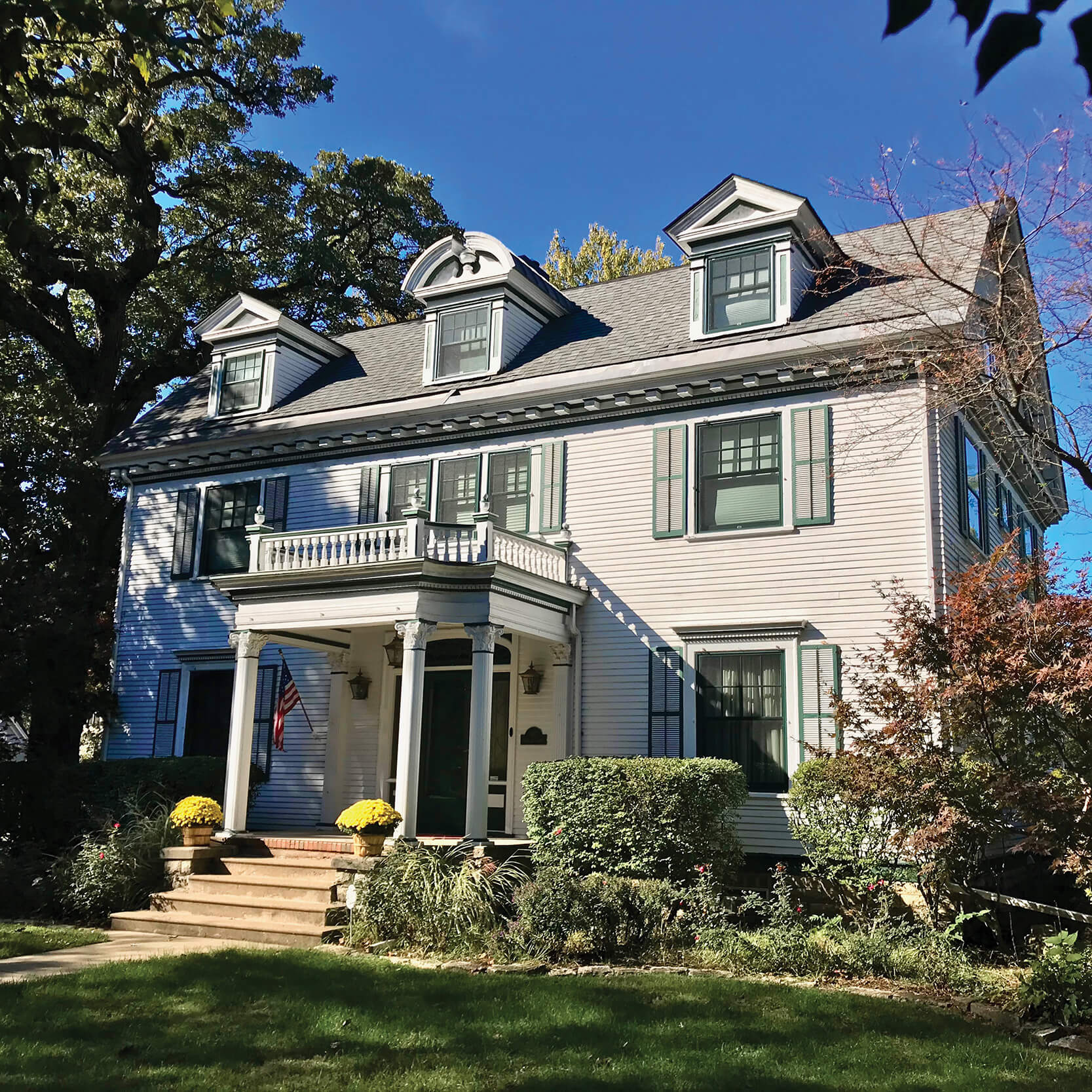

- C. Campbell House
- 895 Cobb Blvd
- Built in 1906
- John Moroff, builder
This Colonial Revival Home, on one of Riverview’s largest lots, features a latticed gazebo, three pedimented dormers on the roof, and fluted Ionic columns supporting the small, but lavish entrance. A large detached garage is in harmony with the main house in style and construction. Judge Charles Bishop Campbell, the original owner, was an attorney; the second owner, Arthur Powers, was a right-of-way purchaser for Samuel Insull, founder of Commonwealth Edison.
A Famous Hotel
This was Kankakee’s Hotel Riverview, an elegant summer resort designed to attract visitors from Chicago and other Midwest cities for a relaxing country vacation. It opened in July 1887, under the joint ownership of Kankakee businessman Emory Cobb and two railroads, the Illinois Central and the Big Four (Cincinnati, Indianapolis, St. Louis and Chicago). The hotel was located in “Cobb’s Woods,” on a triangular site bounded by Chicago Avenue, Greenwood Avenue, and Park Place.
